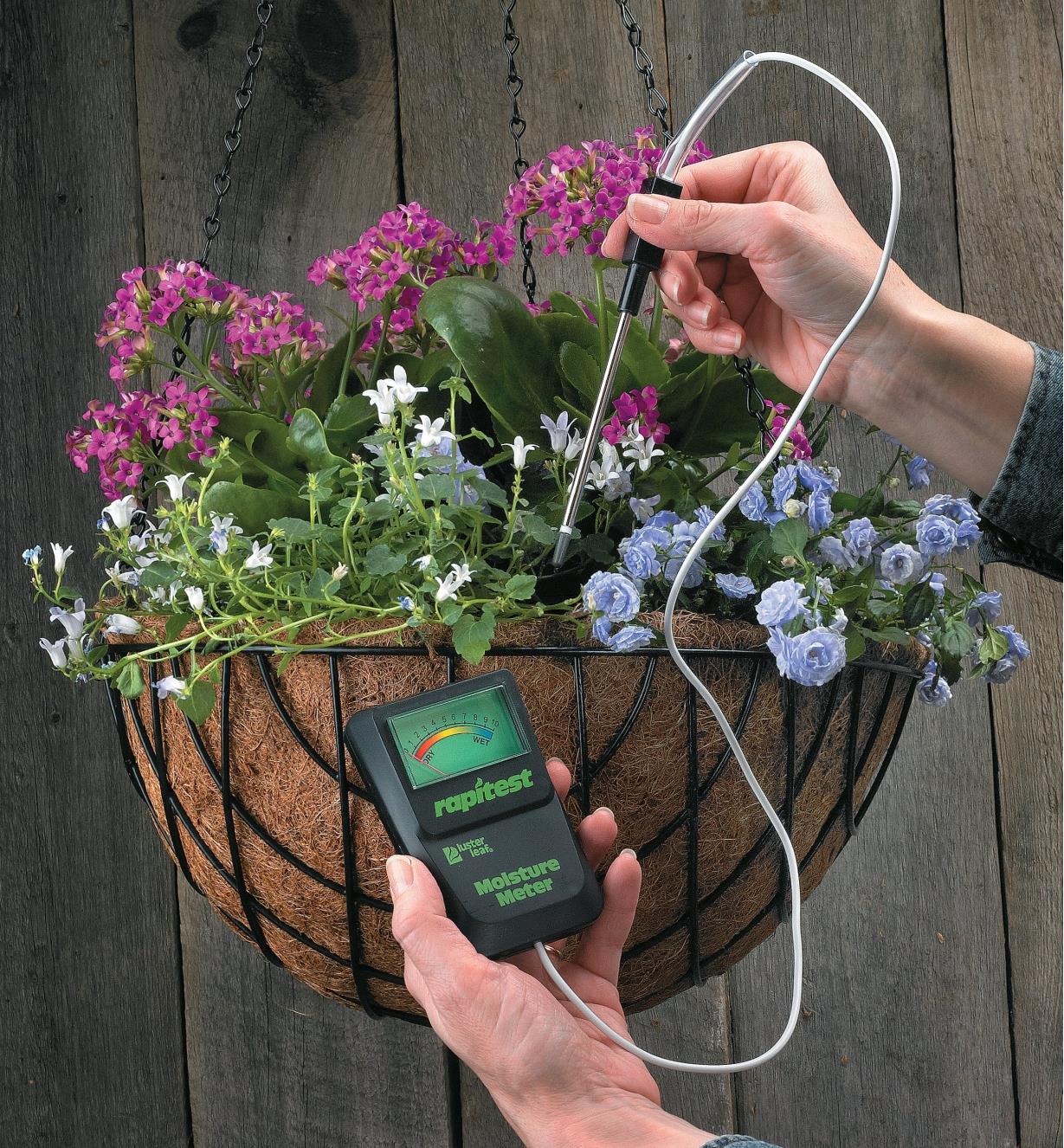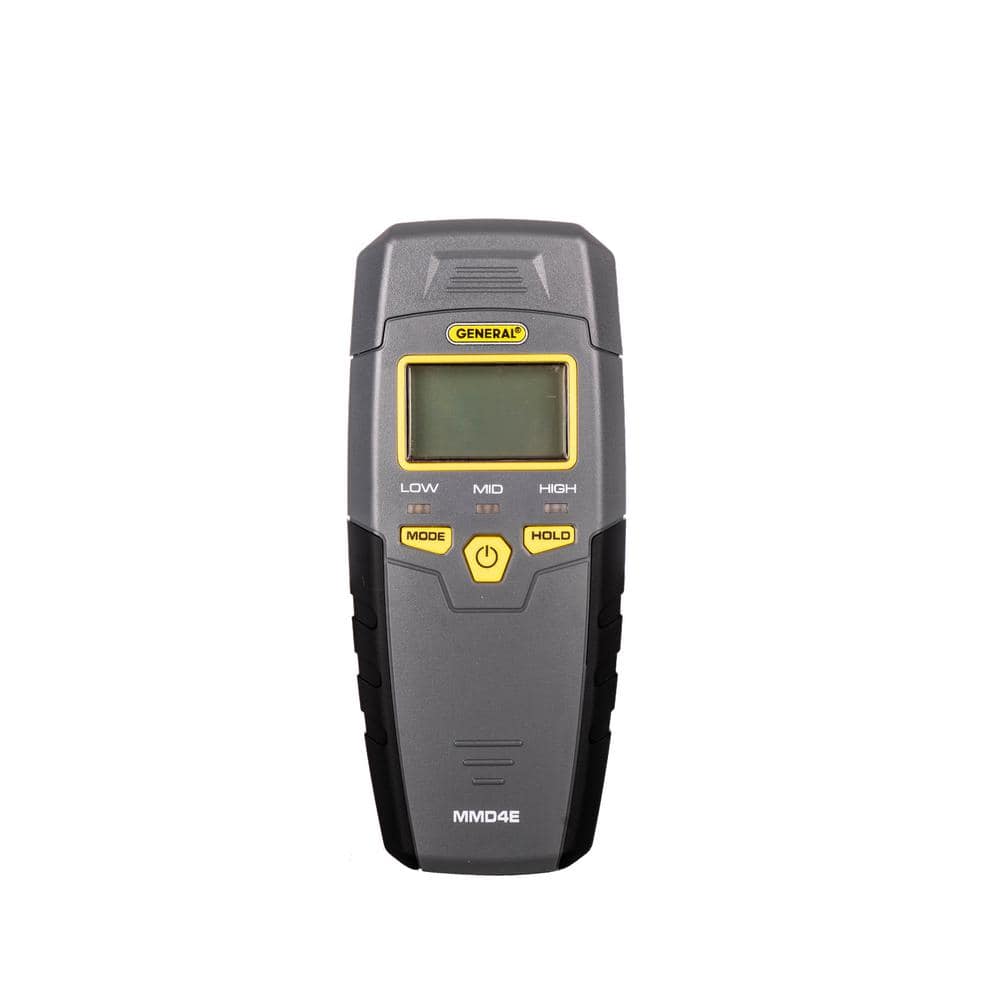How a Moisture Meter Can Assist You Keep Optimal Conditions in your house or Workplace
How a Moisture Meter Can Assist You Keep Optimal Conditions in your house or Workplace
Blog Article
Look Into the Globe of Wetness Meters: Whatever You Need to Know
In the realm of moisture meters exists a world of accuracy and practicality that commonly goes undetected. Understanding just how moisture meters run, the different kinds readily available, and their varied usages can lose light on their relevance in making certain high quality and efficiency.
Just How Dampness Meters Job
Dampness meters run by gauging the electrical conductivity or capacitance of products to establish the dampness content existing - Moisture Meter. These meters are important tools throughout various markets, including agriculture, woodworking, and construction. By making use of various approaches such as pinless or pin-type modern technology, wetness meters supply precise readings that help specialists make educated decisions
Pin-type moisture meters work by inserting the sharp pins right into the product being tested. On the various other hand, pinless moisture meters use electromagnetic signals to scan a larger location without creating any damages to the material's surface.
No matter of the method used, wetness meters play an essential role in stopping issues such as mold growth, architectural damages, or item problems brought on by excess moisture. Comprehending just how these meters job is crucial for guaranteeing the high quality and stability of materials in different applications.
Sorts Of Wetness Meters
Provided the vital function dampness meters play in different sectors, it is necessary to comprehend the different kinds readily available to experts for properly assessing dampness levels. There are mostly 2 major kinds of wetness meters: pinless and pin-type dampness meters.
Pin-type moisture meters utilize 2 pins that are put into the product being examined to determine the electric resistance between them. This technique is typically utilized for timber, drywall, and various other structure products. Pin-type meters provide exact analyses at details depths, making them optimal for recognizing wetness slopes.
On the various other hand, pinless dampness meters utilize electro-magnetic sensor plates to check a bigger location of the material without causing any kind of damages. This type is ideal for promptly scanning huge locations and is typically made use of for flooring, walls, and ceilings. Pinless meters are practical for taking readings on finished surface areas without leaving any noticeable marks.
Both sorts of wetness meters have their benefits and are selected based on the details requirements of the task at hand. Understanding the differences in between these types is vital for experts to make accurate dampness assessments.
Applications Throughout Industries
With varied capabilities, moisture meters discover prevalent application throughout different industries, aiding specialists in making sure ideal problems for products and structures. In the farming sector, moisture meters are vital for establishing the wetness web content in grains, seeds, and hay, making certain high quality control and preventing mold development. Building and construction experts count on wetness meters to evaluate the wetness levels in structure materials like timber, concrete, and drywall, which is essential for maintaining structural stability and stopping problems like rot or mold and mildew. The floor covering sector uses dampness meters to measure the dampness material in subfloors before installing various flooring, avoiding pricey damages as a result of excess dampness. In addition, in the food sector, wetness meters are made use of to keep an eye on and manage moisture levels in products such as grains, nuts, and dried out fruits to keep freshness and quality. Furthermore, wetness meters play a crucial function in the restoration and damage control market by helping specialists address and identify water damage in structures without delay. Throughout these diverse industries, dampness meters are essential devices for guaranteeing the high quality, safety and security, and long life of various materials and products.
Tips for Utilizing Dampness Meters
Utilize the wetness meter's calibration settings to ensure exact readings when gauging the dampness material more helpful hints in different products. In addition, make certain the meter is set to the appropriate dampness range for the material you are measuring to get the most precise results.

When utilizing a pin-type moisture meter, place the pins to the ideal depth advised for the material being checked. This guarantees that the moisture readings are extracted from the right deepness within the material, offering an extra exact depiction of its dampness material. For pinless moisture meters, bear in mind to maintain appropriate call with the material's surface area to obtain trustworthy readings.

Frequently inspect and change the batteries in your wetness meter to prevent imprecise analyses because of reduced power. Store the meter in a secure and dry location when not in usage to lengthen its life-span and maintain its accuracy. By following these pointers, you can maximize the efficiency of your moisture meter and get precise moisture content dimensions across various materials.

Maintenance and Calibration
To ensure the precision of dampness web content dimensions, regular upkeep and calibration of the wetness meter are essential steps in its proper performance. Upkeep includes maintaining the dampness meter tidy and totally free from debris that could affect its readings. It is crucial to comply with the maker's standards for cleaning up to stop damage to the gadget. In addition, normal calibration is essential to confirm the accuracy of the analyses. Calibration readjusts the dampness meter to ensure that it gives regular and dependable outcomes.
Calibration needs to be performed regularly, specifically if the wetness meter is made use of often or in critical applications where precise dimensions are called for. By keeping and adjusting the moisture meter consistently, customers can rely on the accuracy of the moisture content measurements obtained.
Final Thought
To conclude, moisture meters play a vital duty in different industries by properly gauging the dampness web content of materials. Understanding just how these tools function, the various kinds offered, and appropriate maintenance and calibration are vital for obtaining trusted results. Whether in farming, building, or manufacturing, making use of dampness meters aids ensure quality assurance and efficiency in processes.
Building professionals rely on try these out dampness meters to assess the moisture levels in building products like drywall, timber, and concrete, which is critical for maintaining structural integrity and avoiding issues like rot or mold. The floor covering sector makes use of moisture meters to determine the dampness web content in subfloors prior to mounting various floor treatments, protecting against pricey problems due to excess wetness.Make use of the dampness meter's calibration setups to make certain precise readings when gauging the dampness web content in numerous products. By adhering to these tips, you can make best use of the efficiency of your moisture meter and acquire specific moisture material dimensions throughout various materials.
In conclusion, moisture meters play an essential role in numerous learn the facts here now industries by properly gauging the moisture material of products.
Report this page